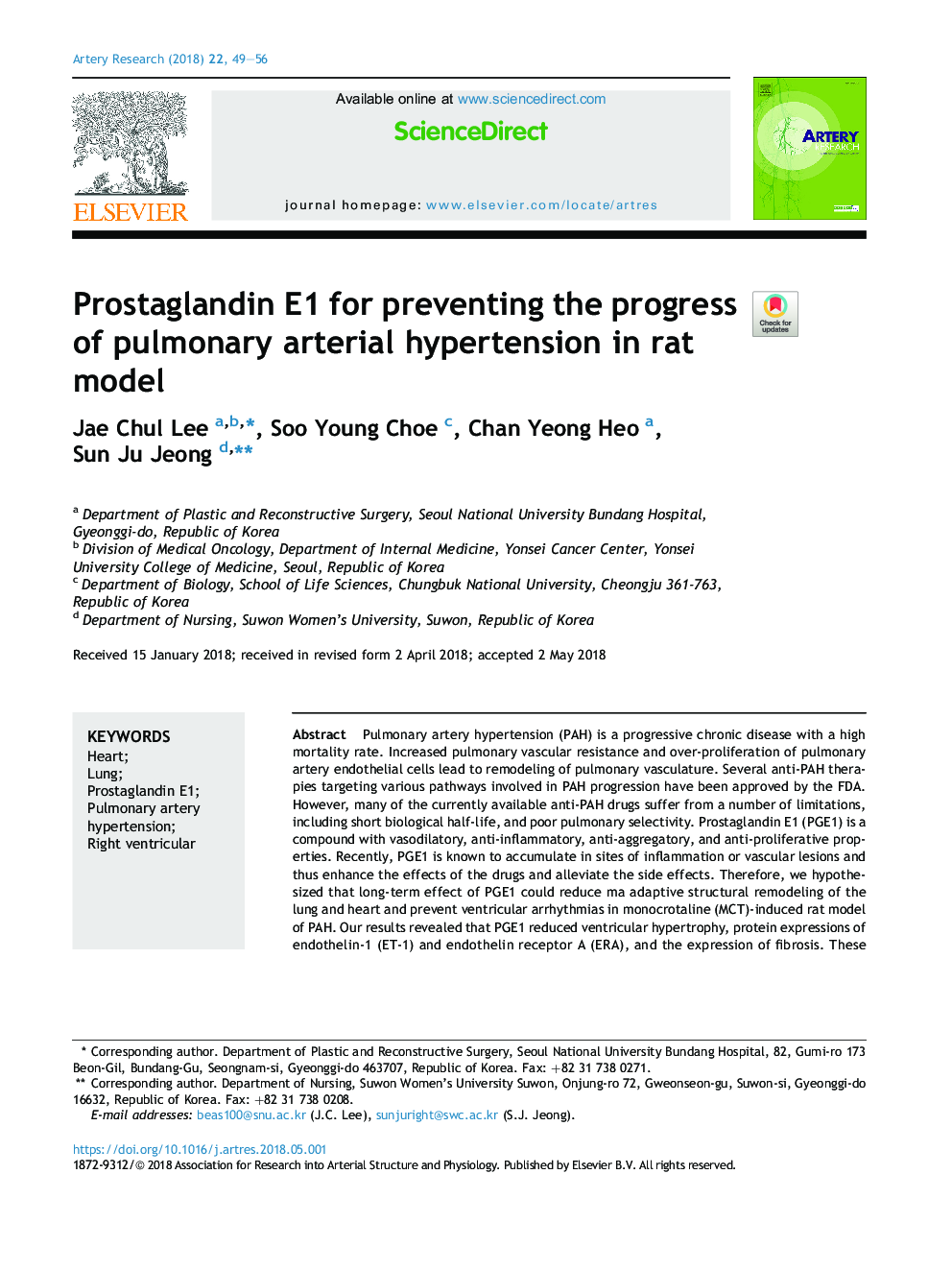| Article ID | Journal | Published Year | Pages | File Type |
|---|---|---|---|---|
| 8656353 | Artery Research | 2018 | 8 Pages |
Abstract
Pulmonary artery hypertension (PAH) is a progressive chronic disease with a high mortality rate. Increased pulmonary vascular resistance and over-proliferation of pulmonary artery endothelial cells lead to remodeling of pulmonary vasculature. Several anti-PAH therapies targeting various pathways involved in PAH progression have been approved by the FDA. However, many of the currently available anti-PAH drugs suffer from a number of limitations, including short biological half-life, and poor pulmonary selectivity. Prostaglandin E1 (PGE1) is a compound with vasodilatory, anti-inflammatory, anti-aggregatory, and anti-proliferative properties. Recently, PGE1 is known to accumulate in sites of inflammation or vascular lesions and thus enhance the effects of the drugs and alleviate the side effects. Therefore, we hypothesized that long-term effect of PGE1 could reduce ma adaptive structural remodeling of the lung and heart and prevent ventricular arrhythmias in monocrotaline (MCT)-induced rat model of PAH. Our results revealed that PGE1 reduced ventricular hypertrophy, protein expressions of endothelin-1 (ET-1) and endothelin receptor A (ERA), and the expression of fibrosis. These results support the notion that PGE1 can improve the functional properties of RV, highlighting its potential benefits for heart and lung impairment.
Related Topics
Health Sciences
Medicine and Dentistry
Cardiology and Cardiovascular Medicine
Authors
Jae Chul Lee, Soo Young Choe, Chan Yeong Heo, Sun Ju Jeong,
